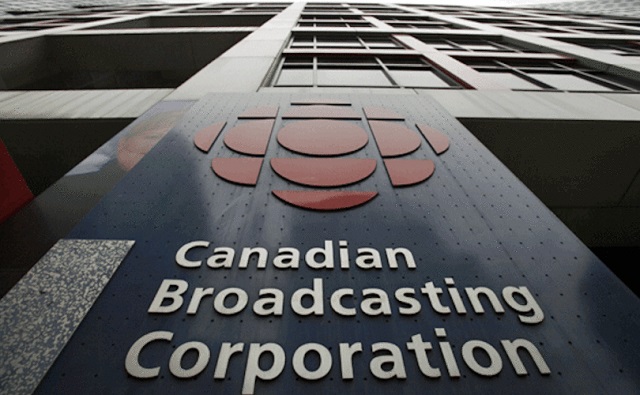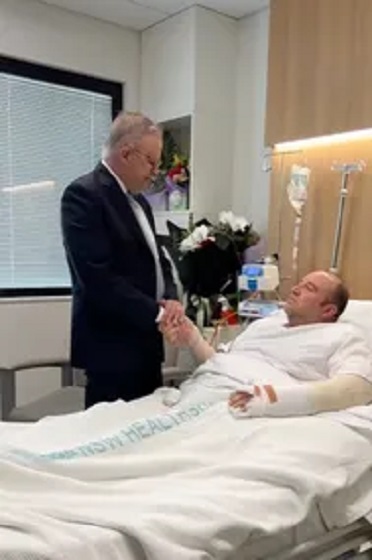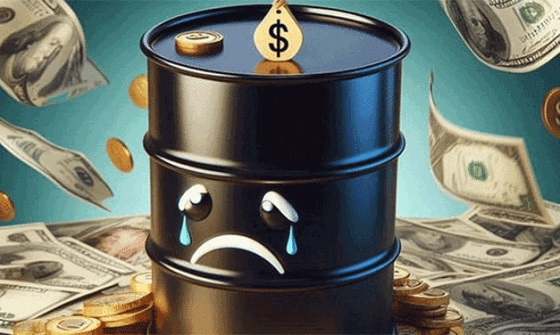Business
Canadians largely ignore them and their funding bleeds their competition dry: How the CBC Spends its Public Funding

If we want to intelligently assess the value CBC delivers to Canadians in exchange for their tax-funded investment, we’ll need to understand two things:
- How CBC spends the money we give them
- What impact their product has on Canadians
The answer to question #2 depends on which Canadians we’re discussing. Your average young family from suburban Toronto is probably only vaguely aware there is a CBC. But Canadian broadcasters? They know all about the corporation, but just wish it would lift its crushing hobnailed boots from their faces.
Stick around and I’ll explain.
For the purposes of this discussion I’m not interested in the possibility that there’s been reckless or negligent corruption or waste, so I won’t address the recent controversy over paying out millions of dollars in executive benefits. Instead, I want to know how the CBC is designed to operate. This will allow us to judge the corporation on its own terms.
The Audit is a reader-supported publication. To receive new posts and support my work, consider becoming a free or paid subscriber.
CBC’s Financial Structure
We’ll begin with the basics. According to the CBC’s 2023-24 projections in their most recent corporate plan strategy, the company will receive $1.17 billion from Parliament; $292 million from advertising; and $209 million from subscriber fees, financing, and other income. Company filings note that revenue from both advertising and legacy subscription pools are dropping. Advertising is trending downwards because of ongoing changes in industry ad models, and the decline in subscriptions can be blamed on competition from “cord-cutting” internet services. The Financing and other income category includes revenue from rent and lease-generating use of CBC’s many real estate assets.
The projected combined television, radio, and digital services spending is $1.68 billion. For important context, 2022-23 data from the 2022-2023 annual report break that down to $996 million for English services, and $816 million for French services. 2022-23 also saw $60 million in costs for transmission, distribution, and collection. Corporate management and finance costs came to around $33 million. Overall, the company reported a net loss of $125 million in 2022-23.
The corporation estimates that their English-language digital platforms attract 17.4 million unique visitors each month and that the average visitor engages with content for 28 minutes a month. In terms of market relevance, those are pretty good numbers. But, among Canadian internet users, cbc.ca still ranked only 43rd for total web destinations (which include sites like google.com and amazon.ca). French-language Radio-Canada’s numbers were 5.2 million unique visitors who each hung around for 50 minutes a month.
Monthly engagement with digital English-language news and regional services was 20 minutes. Although we’re given no visitor numbers, the report does admit that “interest in news was lower than expected.”
CBC content production
All that’s not very helpful for understanding what’s actually going on inside CBC. We need to get a feel for how the corporation divides its spending between programming categories and what’s driving the revenue.
The CRTC provides annual financial filings for all Canadian broadcasters, including the CBC. I could describe what’s happening by throwing columns and rows of dollar figures at you. In fact, should you be so disposed, you can view the spreadsheet here. But it turns out that my colorful graph will do a much better job:
As you can see for yourself, CBC spends a large chunk of its money producing news for all three video platforms (CBC and Radio-Canada conventional TV and the cable/VOD platforms they refer to as “discretionary TV”). The two conventional networks also invest significant funds in drama and comedy production.
The chart doesn’t cover CBC radio, so I’ll fill you in. English-language production costs $143 million (roughly the equivalent of the costs of English TV drama/comedy) while the bill for French-language radio production came in at $94 million (more or less equal to discretionary TV news production).
CBC Content Consumption
Who’s watching? The CBC itself reported that viewers of CBC English television represented only 5.1 percent of the total Canadian audience, and only 2.0 percent tuned in to CBC news. By “total Canadian audience”, I mean all Canadians viewing all available TV programming at a given time. So when the CBC tells us that their News Network got a 2.0 percent “share”, they don’t mean that they attracted 2.0 percent of all Canadians. Rather, they got 2.0 percent of whoever happened to be watching any TV network – which could easily come to just a half of one percent of all Canadians. After all, how many people still watch TV?
According to CRTC data, between the 2014–15 and 2022–23 seasons, English language CBC TV weekly viewing hours dropped from 35 million to 16 million. That total would amount to less than six minutes a day per anglophone Canadian. Specifically, news viewing fell by 52 percent, sports by 66 percent, and drama and comedy by 51 percent.
CBC Radio One and CBC Music only managed to attract 14.3 percent of the Canadian market. What does that actually mean? I’ve seen estimates suggesting that between 15 and 25 percent of all Canadians listen to radio during the popular daily commute slots. So at its peak, CBC radio’s share of that audience is possibly no higher than 3.5 percent of all Canadians.
A recent survey found that only 41 percent of Canadians agreed the CBC “is important and should continue doing what it’s doing.” The remaining 59 percent were split between thinking the CBC requires “a lot of changes” and was “no longer useful.” Those numbers remained largely consistent across all age groups.
It seems that while some Canadian’s might support the CBC in principle, for the most part, they’re not actually consuming a lot of content.
CBC Revenue sources
CBC’s primary income is from government funding through parliamentary allocations. Here’s what those look like:
Advertising (or, “time sales” as they refer to it) is another major revenue source. That channel brought in more than $200 million in 2023:
But here’s the thing: the broadcast industry in Canada is currently engaged in a bitter struggle for existence. Every single dollar from that shrinking pool of advertising revenue is desperately needed. And most broadcasters are – perhaps misguidedly – fighting for more government funding. So why should the CBC, with its billion dollar subsidies, be allowed to also compete for limited ad revenue?
Or, to put it differently, what vital and unique services does the CBC provide that might justify their special treatment?
It’s possible that CBC does target rural and underserved audiences missed by the commercial networks. But those are clearly not what’s consuming the vast majority of the corporation’s budget. Perhaps people are watching CBC’s “big tent” drama and comedy productions, but are those measurably better or more important than what’s coming from the private sector? And we’ve already seen how, for all intents and purposes, no one’s watching their TV news or listening to their radio broadcasts.
Perhaps there’s an argument to be made for maintaining or even increasing funding for CBC. But I haven’t yet seen anyone convincingly articulate it.
Subscribe to The Audit.
Business
Some Of The Wackiest Things Featured In Rand Paul’s New Report Alleging $1,639,135,969,608 In Gov’t Waste


From the Daily Caller News Foundation
Republican Kentucky Sen. Rand Paul released the latest edition of his annual “Festivus” report Tuesday detailing over $1 trillion in alleged wasteful spending in the U.S. government throughout 2025.
The newly released report found an estimated $1,639,135,969,608 total in government waste over the past year. Paul, a prominent fiscal hawk who serves as the chairman of the Senate Homeland Security and Governmental Affairs Committee, said in a statement that “no matter how much taxpayer money Washington burns through, politicians can’t help but demand more.”
“Fiscal responsibility may not be the most crowded road, but it’s one I’ve walked year after year — and this holiday season will be no different,” Paul continued. “So, before we get to the Feats of Strength, it’s time for my Airing of (Spending) Grievances.”
Dear Readers:
As a nonprofit, we are dependent on the generosity of our readers.
Please consider making a small donation of any amount here.
Thank you!
The 2025 “Festivus” report highlighted a spate of instances of wasteful spending from the federal government, including the Department of Health and Human Services (HHS) spent $1.5 million on an “innovative multilevel strategy” to reduce drug use in “Latinx” communities through celebrity influencer campaigns, and also dished out $1.9 million on a “hybrid mobile phone family intervention” aiming to reduce childhood obesity among Latino families living in Los Angeles County.
The report also mentions that HHS spent more than $40 million on influencers to promote getting vaccinated against COVID-19 for racial and ethnic minority groups.
The State Department doled out $244,252 to Stand for Peace in Islamabad to produce a television cartoon series that teaches children in Pakistan how to combat climate change and also spent $1.5 million to promote American films, television shows and video games abroad, according to the report.
The Department of Veterans Affairs (VA) spent more than $1,079,360 teaching teenage ferrets to binge drink alcohol this year, according to Paul’s report.
The report found that the National Science Foundation (NSF) shelled out $497,200 on a “Video Game Challenge” for kids. The NSF and other federal agencies also paid $14,643,280 to make monkeys play a video game in the style of the “Price Is Right,” the report states.
Paul’s 2024 “Festivus” report similarly featured several instances of wasteful federal government spending, such as a Las Vegas pickleball complex and a cabaret show on ice.
The Trump administration has been attempting to uproot wasteful government spending and reduce the federal workforce this year. The administration’s cuts have shrunk the federal workforce to the smallest level in more than a decade, according to recent economic data.
Festivus is a humorous holiday observed annually on Dec. 23, dating back to a popular 1997 episode of the sitcom “Seinfeld.” Observance of the holiday notably includes an “airing of grievances,” per the “Seinfeld” episode of its origin.
Alberta
A Christmas wish list for health-care reform

From the Fraser Institute
By Nadeem Esmail and Mackenzie Moir
It’s an exciting time in Canadian health-care policy. But even the slew of new reforms in Alberta only go part of the way to using all the policy tools employed by high performing universal health-care systems.
For 2026, for the sake of Canadian patients, let’s hope Alberta stays the path on changes to how hospitals are paid and allowing some private purchases of health care, and that other provinces start to catch up.
While Alberta’s new reforms were welcome news this year, it’s clear Canada’s health-care system continued to struggle. Canadians were reminded by our annual comparison of health care systems that they pay for one of the developed world’s most expensive universal health-care systems, yet have some of the fewest physicians and hospital beds, while waiting in some of the longest queues.
And speaking of queues, wait times across Canada for non-emergency care reached the second-highest level ever measured at 28.6 weeks from general practitioner referral to actual treatment. That’s more than triple the wait of the early 1990s despite decades of government promises and spending commitments. Other work found that at least 23,746 patients died while waiting for care, and nearly 1.3 million Canadians left our overcrowded emergency rooms without being treated.
At least one province has shown a genuine willingness to do something about these problems.
The Smith government in Alberta announced early in the year that it would move towards paying hospitals per-patient treated as opposed to a fixed annual budget, a policy approach that Quebec has been working on for years. Albertans will also soon be able purchase, at least in a limited way, some diagnostic and surgical services for themselves, which is again already possible in Quebec. Alberta has also gone a step further by allowing physicians to work in both public and private settings.
While controversial in Canada, these approaches simply mirror what is being done in all of the developed world’s top-performing universal health-care systems. Australia, the Netherlands, Germany and Switzerland all pay their hospitals per patient treated, and allow patients the opportunity to purchase care privately if they wish. They all also have better and faster universally accessible health care than Canada’s provinces provide, while spending a little more (Switzerland) or less (Australia, Germany, the Netherlands) than we do.
While these reforms are clearly a step in the right direction, there’s more to be done.
Even if we include Alberta’s reforms, these countries still do some very important things differently.
Critically, all of these countries expect patients to pay a small amount for their universally accessible services. The reasoning is straightforward: we all spend our own money more carefully than we spend someone else’s, and patients will make more informed decisions about when and where it’s best to access the health-care system when they have to pay a little out of pocket.
The evidence around this policy is clear—with appropriate safeguards to protect the very ill and exemptions for lower-income and other vulnerable populations, the demand for outpatient healthcare services falls, reducing delays and freeing up resources for others.
Charging patients even small amounts for care would of course violate the Canada Health Act, but it would also emulate the approach of 100 per cent of the developed world’s top-performing health-care systems. In this case, violating outdated federal policy means better universal health care for Canadians.
These top-performing countries also see the private sector and innovative entrepreneurs as partners in delivering universal health care. A relationship that is far different from the limited individual contracts some provinces have with private clinics and surgical centres to provide care in Canada. In these other countries, even full-service hospitals are operated by private providers. Importantly, partnering with innovative private providers, even hospitals, to deliver universal health care does not violate the Canada Health Act.
So, while Alberta has made strides this past year moving towards the well-established higher performance policy approach followed elsewhere, the Smith government remains at least a couple steps short of truly adopting a more Australian or European approach for health care. And other provinces have yet to even get to where Alberta will soon be.
Let’s hope in 2026 that Alberta keeps moving towards a truly world class universal health-care experience for patients, and that the other provinces catch up.
-

 International2 days ago
International2 days agoCommunist China arrests hundreds of Christians just days before Christmas
-

 International2 days ago
International2 days agoGeorgia county admits illegally certifying 315k ballots in 2020 presidential election
-

 Business2 days ago
Business2 days agoSome Of The Wackiest Things Featured In Rand Paul’s New Report Alleging $1,639,135,969,608 In Gov’t Waste
-

 Energy2 days ago
Energy2 days ago‘The electric story is over’
-

 International1 day ago
International1 day ago$2.6 million raised for man who wrestled shotgun from Bondi Beach terrorist
-

 Alberta2 days ago
Alberta2 days agoCalgary’s new city council votes to ban foreign flags at government buildings
-

 Alberta2 days ago
Alberta2 days agoA Christmas wish list for health-care reform
-

 Alberta1 day ago
Alberta1 day agoOttawa-Alberta agreement may produce oligopoly in the oilsands














